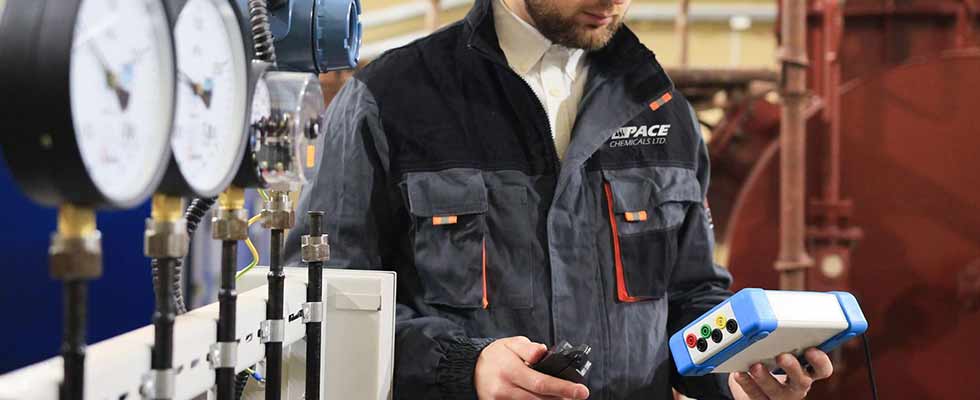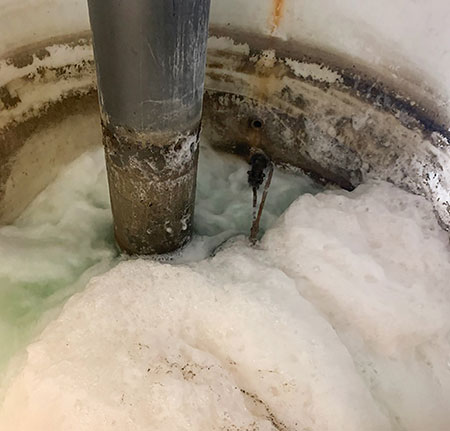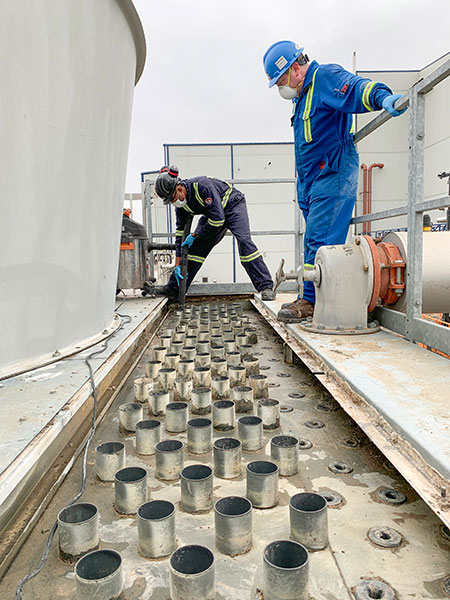
Operating a public facility takes diligence to keep everyone in and around the area safe. Among the most pressing and regulated parts of running a facility is preventing legionella growth. However, during the COVID-19 pandemic when facilities were shut down and legionella was allowed to thrive, reopening involved far more than just throwing open the doors and allowing the masses to pour in.

Water and heating, ventilation and air conditioning (HVAC) systems are a series of pipes, valves and pumps that can hide many problems. These issues can remain undetectable until the system starts fully functioning again and the water can be sampled and tested after running for a period. A good example was an indoor public ice rink in the Greater Toronto Area (GTA) in Ontario, Canada, where a team of water treatment specialists had to act fast and pull an all-nighter to prevent a potentially catastrophic legionella outbreak after the HVAC system had been restarted. Normally, service technicians are at facilities and on the roof, testing the water twice per month but that slowed during
the pandemic.
Legionella: The Hiding Microbe
Outbreaks of legionella are well-documented and systems, predominantly rooftop cooling towers that control the HVAC temperature, are heavily regulated, particularly in densely populated areas. That is because legionella can cause serious breathing issues and can be deadly to vulnerable populations. Litigation, insurance and greater scrutiny for a facility following a legionella outbreak can be costly.
Legionella thrives in dormant water under heated conditions like direct sun. It is not an exceptionally robust microbe, but it can move through a system and hide in biofilm, seeking refuge inside amebae. These traits make this microbe hard to detect deep within a system.
Cooling tower water basins are essential to cooling the recirculated water that runs through the HVAC but can become breeding grounds for legionella. These towers have massive fans that pull heat from the building, but along with extracting heat, they emit water vapor. If the water vapor contains legionella, it can travel long distances and affect an entire community.
It Is Summertime, Grab Your Skates
Hockey is a year-round sport in Canada, and rinks are gathering places for the entire community for concerts and other events. The GTA facility is run by the local municipality and contains a rock-climbing section, a daycare and other community services, so normal operations have it in constant use year-round.
During the pandemic, the facility was used off and on as a COVID-19 testing site, but, for the most part, it was closed for long periods of time. Downtime meant that the water systems were left flooded with treated water. To reopen for its designated purpose, the facility needed more cooling for the ice so the powerful rooftop cooling towers and the pipe system through which cold water is circulated is well monitored and maintained.

It was anticipated that the GTA facility water system needed to be tested and serviced before opening. For safety reasons, tighter servicing schedules were implemented to ensure that initial servicing and post-operational testing were performed closely together.
Microbial growth is most prevalent in a dormant system, so technicians did an initial treatment assuming there was biofilm and some possible legionella present. They scheduled another service call a few days later while the facility was preparing to open to the public.
Fast Detection
Legionella laboratory culture-based testing can take seven to 10 days, so quicker test results can be the difference in an outbreak. Waiting for these delayed test results can leave users and communities vulnerable. However, a service team equipped to provide quantitative polymerase chain reaction (qPCR) or DNA testing reduces the time for an accurate result to less than one hour. Facility managers should be aware of the testing turnaround capabilities of their water treatment servicer.
The initial inspection and servicing of the GTA facility involved a technician going onto the roof and sampling and treating the water both in the system and the basin of the cooling tower using modern methods. Tests returned negative, so regular servicing was done using chemical treatments to ensure the proper cooling tower operation was maintained. Pumps and relays are automated so they were closely monitored after restarting the system.
The service call was followed by a standard report presented to facility managers that contained a recommendation for a thorough scrubbing and sanitization of the basin. A scrubbing and sanitization service using chlorine can require up to 24 hours of downtime to properly complete. With no detection of legionella, the sanitization only takes five hours.
Once the system was running, the scheduled service call 10 days later revealed brackish and foaming water in the cooling tower basin. Upon inspection, it was discovered that a stripped valve had caused a blockage in the feed loop, resulting in the basin filling with the fouled water. Discoloration and foam are indicators of biofilm forming on the inside of pipes and in the basin. Biofilm is a breeding ground for legionella.
Quick Response
After learning of the potential hazard at the end of the business day, city officials decided to close the facility and requested the water treatment servicing company immediately test the basin for potential legionella contamination. The pressing question was whether the rink had to be thawed, drained and sanitized, which would be costly and delay or postpone activities that had already been scheduled.
Once a technician arrived, nighttime had set in, so the samples were taken by flashlight. He flushed the system and drove back to the central facility for testing. The technician that discovered the fouled water stayed on-site, ready to work through the night to begin the cleaning and sterilization process.
After returning to the main office, the water was tested and by 3 a.m., the test came back negative. City officials were informed and service was scheduled to repair the valve.
Scrubbing and sanitizing the cooling tower basin using a chlorine wash was ordered as a preventative measure. Following the sanitization procedure, the system water was replaced, and chemical additives were introduced that would treat the existing biofilm and any corrosion that might have built up.
Prevention: Testing & Regular Maintenance
Once the system was safely restored, city officials requested a list of recommendations to retain safe operations. Those included:
- regularly scheduled system servicing visits
- regular testing and extra testing when deemed necessary
- a crisis management procedure and communication plan
- a system assessment with some system upgrades
- remote monitoring of critical parts of the system
After every visit, a report was generated and recommendations were supplied. After a review of previous reports, it was found that some recommendations were overlooked. If they had been addressed right away, the crisis may have been avoided at a lower cost to the city.
Healthy Community
Operators did not have to sanitize the rink again or replace the ice. City officials and facility maintenance managers have confirmed that there are no reported incidents of legionella cases in the community, and they are happy with the outcome. Municipal employees close to the project said that the team went above and beyond to ensure the safety of facility staff and the community.

